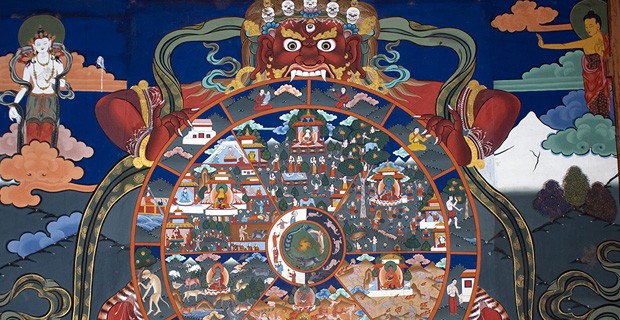Virtuous karma and its effects
Having generated the motivation for a good rebirth, the text turns to creating the causes for that goal. Part of a series of teachings on the Gomchen Lamrim by Gomchen Ngawang Drakpa. Visit Gomchen Lamrim Study Guide for a full list of contemplation points for the series.
- Virtuous karma is created when restraining from negative actions or doing the opposite
- The ways that virtuous karma ripens
- Polluted and unpolluted karma
- The causes for rebirth in a pure land
- Throwing and completing karma
- The four combinations of throwing and completing karma
Gomchen Lamrim 32: Virtuous karma and it’s effects (download)
Contemplation points
- There are two aspects to doing virtuous actions (although the lamrim itself only explains one of them). What are these two?
- What is the motivation we often have for doing virtue/refraining from non-virtue when we first start off on the path? What motivation do we eventually progress to?
- Go through the ten virtues (or 20 if you’d like to do both aspects) and consider each of the four results that come from them (if you created a spreadsheet of the 10 non-virtues last week, add the 10 virtues and the four results for each). How does really examining the results of virtue affect your mind?
- How does taking precepts play a part in creating virtue?
- What makes karma polluted? What kind of being creates polluted karma? What kind of being creates unpolluted karma? What kind of being doesn’t create karma at all?
- Consider that as ordinary beings, every action we do is creating the cause for rebirth in samsara. Why is this not a cause for discouragement? What does creating virtuous karma, even though it is polluted, do that eventually leads to liberation?
- What is the difference between throwing and completing karma? Go through the four points of throwing and completing karma. Does examining this aspect of karma help you to better understand the various situations of beings in samsara?
Venerable Thubten Chodron
Venerable Chodron emphasizes the practical application of Buddha’s teachings in our daily lives and is especially skilled at explaining them in ways easily understood and practiced by Westerners. She is well known for her warm, humorous, and lucid teachings. She was ordained as a Buddhist nun in 1977 by Kyabje Ling Rinpoche in Dharamsala, India, and in 1986 she received bhikshuni (full) ordination in Taiwan. Read her full bio.


